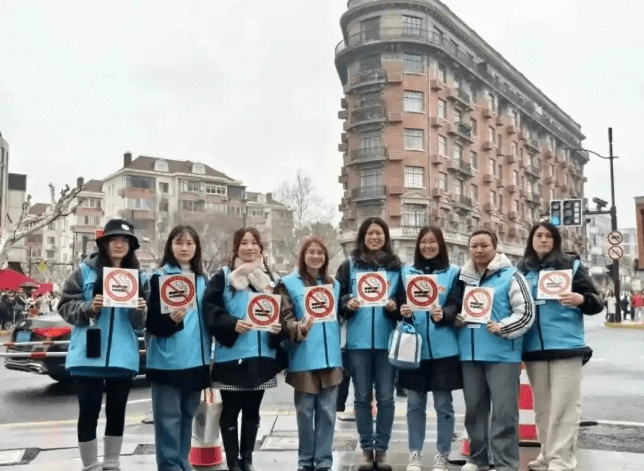
In mid – March 2025, Shanghai initiated an effort to tackle outdoor smoking, also referred to as “roaming smoke”, at eight well – known landmarks that draw both domestic and international tourists.
The eight sites are Wukang Road, Yuyuan Garden, Xintiandi, Nanjing Road Pedestrian Mall, Lujiazui, the Bund, INLET, and Panlong Tiandi. This initiative is designed to mitigate the adverse impacts of secondhand smoke in these congested and highly trafficked areas.
Since its introduction, this move has attracted extensive public attention, with numerous netizens advocating for its implementation across the country. Over the years, Shanghai has implemented a series of measures to control outdoor secondhand smoke. This latest action zeroes in on these eight popular locations. But what led to the selection of these specific sites, and how are the authorities handling the situation? Chen De, the Deputy Director of the Shanghai Health Promotion Center and the Vice President of the Shanghai Smoking Control Association, offered some perspectives on this initiative.
Outdoor Smoke and Cigarette Smoke: What Sets Them Apart?
Outdoor smoking, or “roaming smoke”, takes place when people smoke while walking or cycling outdoors, and the generated smoke affects those nearby. In essence, this is secondhand smoke. According to research by the World Health Organization and the National Health Commission, both first – hand and second – hand smoke contain hundreds of toxic and harmful substances, with at least 70 known cancer – causing agents.
Which Departments Are Involved and What Actions Are Being Taken?
The initiative was launched in March 2025 at eight prominent landmarks to achieve a demonstration effect. These locations will utilize the management teams (such as property committees and businesses) to coordinate efforts in regulation, education, and law enforcement.
For instance, at Jinchao 8 Lane, no – smoking signs have been installed at the main entrance and adjacent subway exits. Smoking areas have been removed, and health ambassadors will conduct patrols during peak hours. Volunteers will also conduct dynamic surveillance of the area, creating a comprehensive, multi – level network to deter smoking throughout the day.
Currently, the emphasis is on enhancing public awareness. Management teams are conducting regular patrols and educational activities. Business owners are also urged to guide smokers and provide no – smoking reminders in various public spaces.
Why Target These Popular Landmarks?
Even though the adult smoking rate in Shanghai has dropped to 19.2%, the secondhand smoke exposure rate remains relatively high at 47.6%. While indoor smoking control has seen improvements, outdoor secondhand smoke continues to be a significant problem. A survey indicates that nearly 60% of citizens frequently encounter roaming smoke, and over 90% are dissatisfied with this situation. Outdoor smoking not only endangers public health but also presents safety hazards and has a negative impact on the city’s appearance and the tourist experience.
Typical places where citizens come across roaming smoke include outdoor waiting areas, sidewalks, bus stops, and the entrances of shopping malls and office buildings. Schools, hospitals, and subway entrances are also areas of concern.
Challenges and Future Prospects
The challenges in managing roaming smoke include the high mobility of people in popular areas and the need to further enhance public awareness of health and civility. Multiple departments, such as those related to tourism, urban management, and health services, are working together to raise awareness and enforce regulations.
Once effective strategies are formulated, the efforts will be extended to more locations, such as outdoor waiting areas, bus stops, and the entrances of schools and hospitals.

